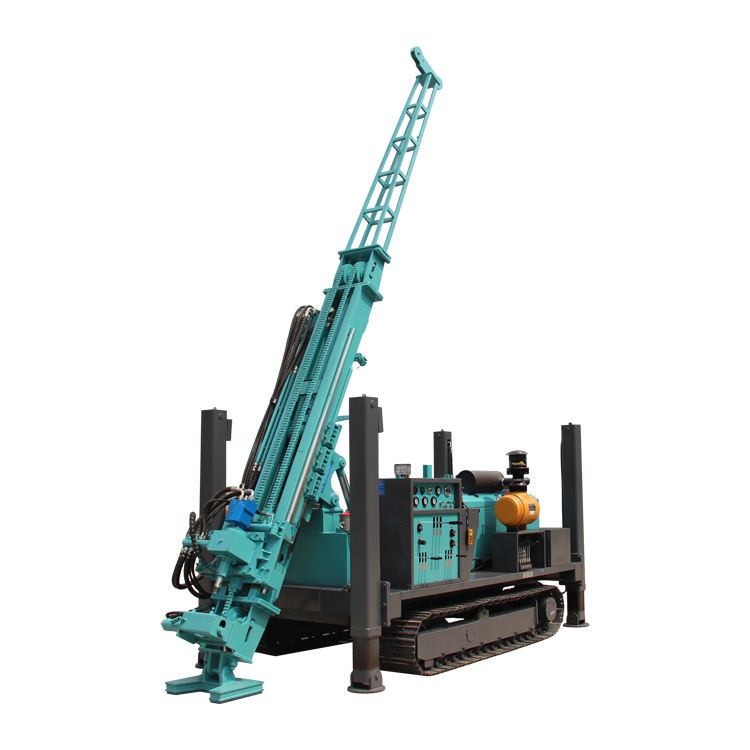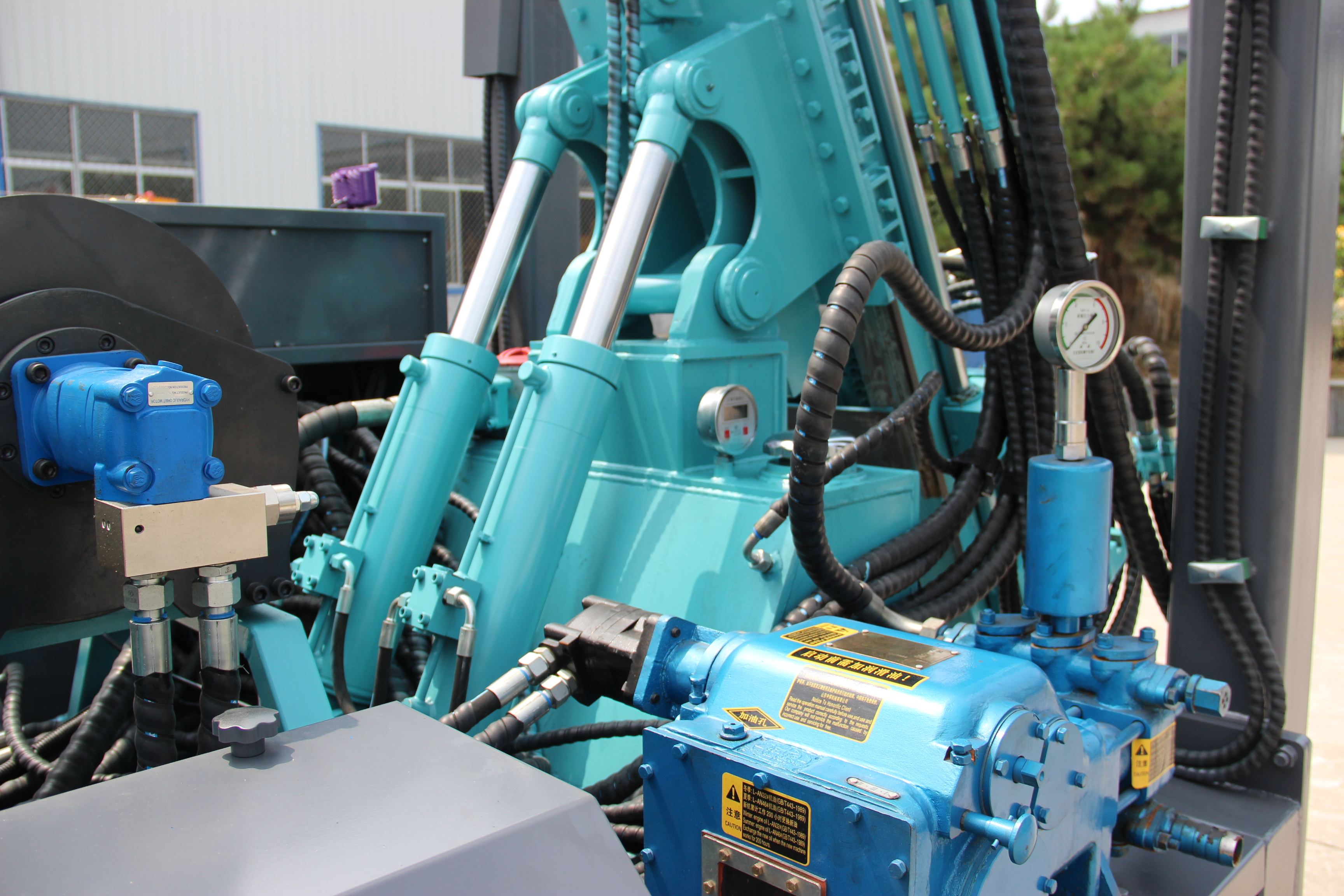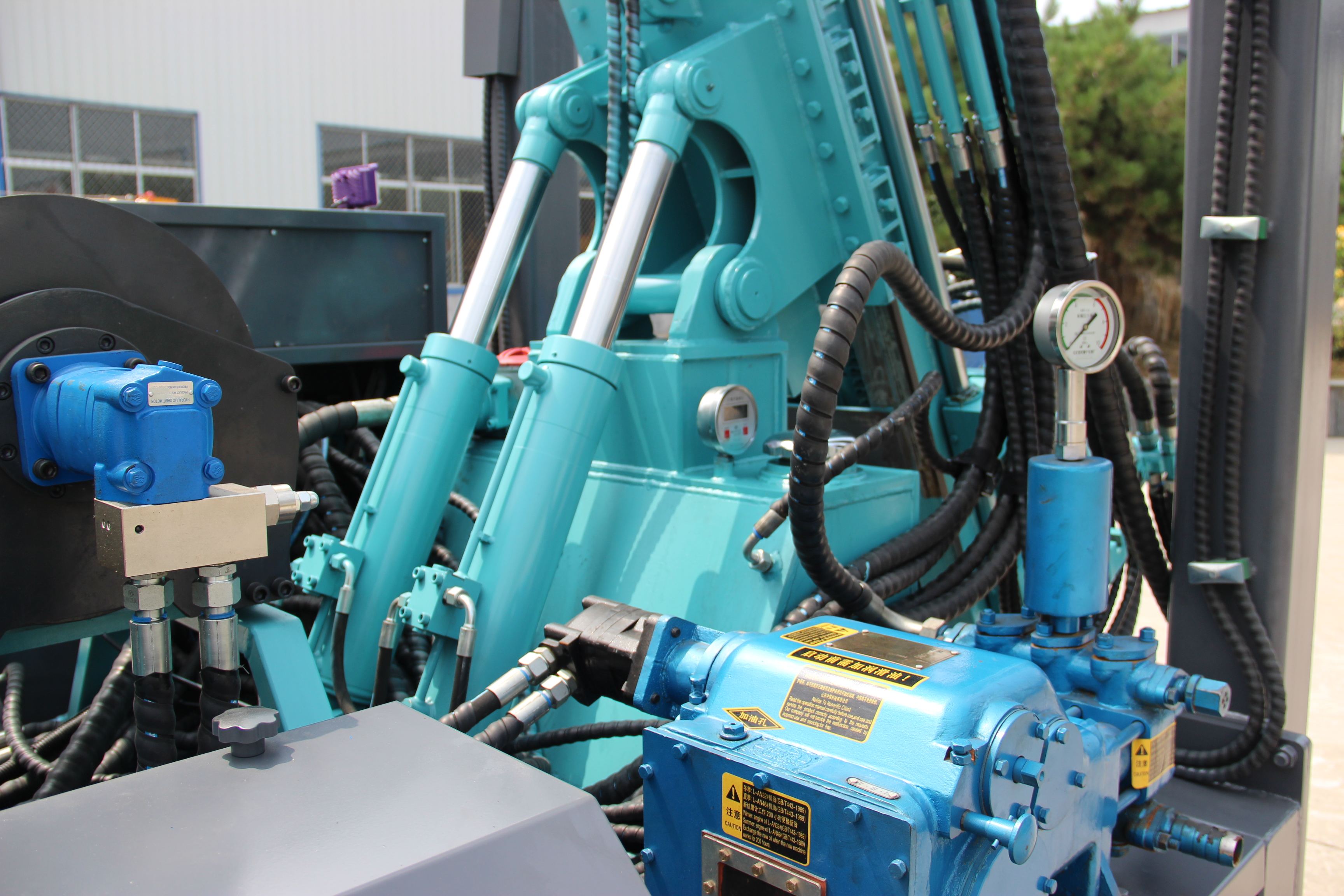Based on the summary of the use of full hydraulic drilling rigs for many years, this article summarizes the matters needing attention in the use of full hydraulic drilling rigs, analyzes the common faults of full hydraulic drilling rigs, and proposes solutions.
Hydraulic transMISSION is called liquid transmission. It is an emerging technology developed based on the principle of liquid static pressure transmission proposed by Pascal in the 17th century. It is a technology widely used in industrial and agricultural production. Today, the level of liquid transmission technology has become an important symbol of a country's industrial development level.
At the end of the 19th century, it was first used in the transmission of machinery and machine tools. With the increasing development of this technology, it has also been applied to drilling equipment. In the 1960s, "full hydraulic drilling rigs" began to appear. Hydraulic technology has been fully applied to drilling equipment, reaching a relatively mature and fairly complete level.

1. Working principle of hydraulic transmission system
The hydraulic transmission system is a set of liquid flow circulation system composed of various hydraulic components. It first converts the mechanical energy input by the motor into the pressure energy of the liquid, and transmits the pressure and working signal by adjusting and controlling the liquid flow of each hydraulic component. Then, with the help of appropriate actuators, the hydraulic energy is converted back into mechanical energy to drive the actuator to achieve various required actions.
2. Advantages and Disadvantages of Hydraulic Transmission
1. Advantages
(1) Hydraulic control uses oil as the working medium, so it can bring the heat generated by power loss from the place where it occurs to other places. In this way, under certain power conditions, the size of the components can be greatly reduced;
(2) From the perspective of load influence, the hydraulic system has mechanical rigidity. When used in a closed-loop system, the positioning rigidity is large and the position error is small;
(3) Compared with mechanical mechanisms, hydraulic actuators have a higher response speed and can start, brake and reverse at high speed. At the same time, their torque-inertia ratio is also large, so their acceleration ability is strong;
(4) Hydraulic transmission is easy to achieve stepless speed regulation and has advantages such as self-lubrication.
2. Disadvantages
(1) It is easy to leak oil, which will affect the smoothness of movement and reduce efficiency;
(2) When the oil is contaminated by dust or other impurities in the fluid cutoff, it will cause the hydraulic control system to malfunction;
(3) The oil is flammable and there is a risk of explosion;
(4) The viscosity of the liquid is affected by temperature, making the oil supply and the movement speed of the actuator unstable;
(5) Air in the oil will cause uneven vibration of the working mechanism;
(6) In terms of mathematical operations, error detection, amplification, testing and compensation for processing low-power signals, hydraulic devices are not as flexible, linear, accurate and convenient as electronic or electromechanical devices. Therefore, they are generally not suitable for the low-power part of the control system and are mainly used in the power part of the system.

III. Maintenance and care of the hydraulic system
The correct use and maintenance of the hydraulic system is the most important work in the use of the full hydraulic drilling rig, and it is an important guarantee for the normal operation and extended service life of the full hydraulic drilling rig.
1. Precautions for installing oil pipes in hydraulic systems
(1) The oil suction pipe should not leak, and all joints should be tight and well sealed;
(2) A filter should be installed on the oil suction pipe;
(3) The return pipe should be inserted below the oil level in the oil tank to prevent splashing foam and mixing with air;
(4) The leaking oil in the electromagnetic reversing valve must be equipped with a separate return pipe to prevent back pressure from being generated when the oil leaks back and avoid hindering the movement of the valve core;
(5) The return port of the overflow valve must not be connected to the inlet of the hydraulic pump;
(6) All pipelines should be installed twice, the first time for trial installation and the second time for formal installation. After the trial installation, remove the oil pipe, pickle it with 20% sulfuric acid or hydrochloric acid solution, then neutralize it with 10% soda water, and finally wash it with warm water. After drying, apply oil for secondary installation. Note that there should be no sand and oxide scale during installation.
2. Choose the right hydraulic oil
Hydraulic oil plays a role in transmitting pressure, lubrication and cooling in the hydraulic system. Improper selection of hydraulic oil is the main cause of early failure and reduced durability of the hydraulic system. Hydraulic oil should be selected according to the brand specified in the manual. When substitute oil is required in special circumstances, its performance should be the same as that of the original brand. Hydraulic oils of different brands cannot be mixed to prevent chemical reactions and performance changes of the hydraulic oil. Dark brown, milky white and odorous hydraulic oil is deteriorated oil and cannot be used.
3. Precautions for regular maintenance
(1) 250h inspection and maintenance: Check the attachments on the filter screen. If there is too much metal powder, it often indicates that the oil pump is worn or the cylinder is pulled. In this case, it must be diagnosed and appropriate measures must be taken before starting. If the filter screen is damaged or dirt is accumulated, it must be replaced in time, and the hydraulic oil must be replaced at the same time if necessary.
(2) 500h inspection and maintenance: After the drilling rig has been running for 500h, the filter element should be replaced regardless of its condition, because it is difficult to detect minor damage to the filter element with the naked eye. If the operation is carried out at high temperature for a long time, the filter element should be replaced in advance.
(3) 1000h inspection and maintenance: At this time, the filter and hydraulic oil tank should be cleaned, and the filter element and hydraulic oil should be replaced. The oil change time should be appropriately advanced for long-term high-temperature operation.
(4) 7000h and 10000h inspection and maintenance: At this time, the hydraulic system of the drilling rig needs to be inspected by professionals and necessary adjustments and repairs should be carried out. According to practice, imported hydraulic pumps and hydraulic motors must be overhauled after working for 10,000h, otherwise the hydraulic pump may be damaged due to disrepair, which is fatal to the hydraulic system.
4. Prevent solid impurities from mixing into the system
Clean hydraulic oil is the life of the hydraulic system. There are many precision parts in the hydraulic system, and some are equipped with damping holes or gaps. If solid impurities invade, it will cause the precision parts to be strained and the oil channel to be blocked, endangering the safe operation of the hydraulic system. The general ways for solid impurities to enter include: unclean hydraulic oil; unclean refueling tools; careless refueling, repair and maintenance; hydraulic component desquamation, etc.
Solid impurities can be prevented from entering from the following aspects:
(1) Hydraulic pressure must be filtered when refueling, and refueling tools should be reliably clean. Do not remove the filter at the refueling port of the hydraulic oil tank to increase the refueling speed. Refueling personnel should use clean gloves and work clothes.
(2) When maintaining, remove the hydraulic oil tank refueling cap, filter cap, inspection hole, hydraulic oil pipe and other parts. When the hydraulic system oil circuit is exposed, avoid dust. The disassembled parts must be thoroughly cleaned before opening. If wiping materials are required, wiping materials that do not remove fiber impurities should be selected. Hydraulic components and hydraulic hoses should be carefully cleaned and blown dry with high-pressure air before assembly. Use genuine filter elements with intact packaging (if the packaging is damaged, the filter element may be unclean even if it is intact). Clean the filter at the same time as the oil change. Use wiping materials to carefully remove dirt inside the filter housing before installing the filter element.
(3) The hydraulic system cleaning oil must be the same brand as the system, the oil temperature must be between 45 and 80°C, and the impurities in the system must be removed as much as possible with a large flow rate. The hydraulic system must be cleaned repeatedly for more than three times, and the oil must be discharged from the system while it is hot after each cleaning. After cleaning, clean the filter, replace the new filter element, and add new oil.

IV. Prevent air and water from invading the hydraulic system
1. Prevent air from invading the hydraulic system
Under normal pressure and temperature, the hydraulic oil contains 6% to 8% air by volume. When the pressure is reduced, the air will be released from the oil, and the bubbles will burst, causing "cavitation" of the hydraulic components and generating noise. A large amount of air entering the oil will aggravate the "cavitation" phenomenon, increase the compressibility of the hydraulic oil, increase the working instability, reduce the working efficiency, and cause the actuator to "creep" and other adverse consequences. In addition, air will oxidize the hydraulic oil and accelerate its deterioration. To prevent air intrusion, pay attention to the following points:
(1) After maintenance and oil change, remove the air in the system according to the "Instruction Manual" that comes with the machine.
(2) The suction pipe of the hydraulic oil pump must not be exposed to the oil surface, and the suction pipe must be well sealed.
(3) The seal of the oil pump drive shaft should be good. When replacing the oil seal, a genuine "double-lip" oil seal should be used instead of a "single-lip" oil seal, because the "single-lip" oil seal can only seal oil in one direction and does not have the function of sealing air.
2. Prevent water from invading the hydraulic system
Excessive water in the hydraulic oil will cause the hydraulic components to rust, the oil to emulsify and deteriorate, the strength of the lubricating oil film to decrease, and mechanical wear to accelerate. In addition to preventing water from invading during maintenance, it is also necessary to tighten the lid of the oil storage barrel when not in use, and it is best to place it upside down; hydraulic oil with a high water content must be filtered multiple times, and the dried filter paper must be replaced each time it is filtered. When there is no special instrument for detection, the hydraulic oil can be dripped onto a hot iron plate. It can be refilled only when there is no steam coming out and it burns immediately.
 Mobile:
Mobile: E-mail:
E-mail: